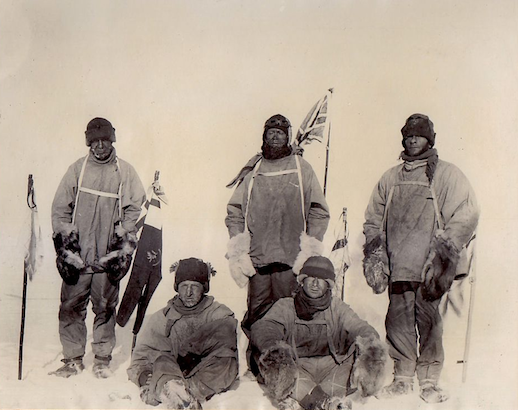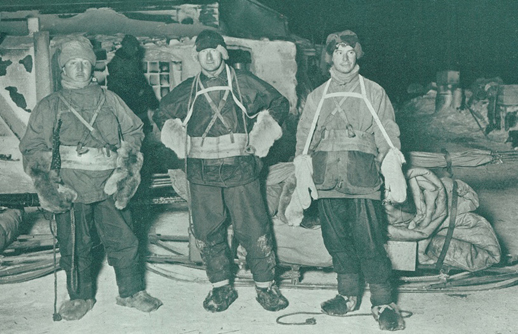Hello….I’m new to Caught by the River – I think it was Oct/Nov I signed up for the newsletter and haven’t explored the shop yet, except a random buy of Issue 5 of the Antidotes. I thought you might be interested in what happened next. I’m very grateful, as you can see from the attachment. All of it is true..!!
Best wishes, Sue
One read of this email and naturally our curiosity was piqued. We read the attached document and here it is. It’s a lovely story that made us smile, mine just that little wider perhaps due to the extraordinary synchronicity of the fact that the book I was reading at the time is one that’s key to Sue’s story. Spooky. (JB)
In late September I walked in hot sunshine across the bottom of the sea. Behind me the grassy cliffs of Rhossili on the Gower peninsula, ahead the tidal island well known to Dylan Thomas who was marooned there as a young boy. I stayed on the Worm from dusk till midnight, sitting on the top grass, frightened to go further. The causeway felt like another country. Fields of mussel shells, rock hedges, shallow pools, distant hills, a flat-topped mountain. I reached the island and followed the path as far as stamina would allow. On my return I celebrated with a beer in a local pub. A row of framed photographs on the back wall looked strangely familiar – one in particular, as I made my way towards it. I knew the names of each of the five men: three standing and two sitting in the snow. Oates, Bowers, Scott, Wilson and Evans at the South Pole on January 17th 1912. The names and the faces.
Or, thought I knew them.
I discovered that Edgar Evans had been born at Fern Hill Cottage, Middleton, less than a mile from the causeway to Worm’s Head. He joined the navy aged 15 and met Scott while serving on HMS Majestic. He was a member of the Discovery expedition to the Antarctic 1901-1904, and was chosen on the Terra Nova expedition 1910-1912, as one of the five to make the final attempt to reach the South Pole. He was the first to die. His body lies somewhere at the base of the Beardmore Glacier.
I left the pub and walked the few yards to Rhossili church where Edgar Evans had been baptised and married. His widow, Lois, had placed a memorial on the wall near the altar, to the husband whose death on February 17th 1912 she did not know of until January 1913, almost a year later. To seek, to strive, to find and not to yield.
I was in my childhood home aged 13, looking at a book I had found on my father’s bookshelves. South With Scott written by another Evans – Edward, later Lord Mountevans. The five figures, their faces, their attitudes, standing or sitting squinting into the fierce sunlight and the shadow which seemed to hang unseen behind them. It made a deep imprint, one which has surfaced again and again over the years. I don’t know what it was this time that brought it back with such force. Perhaps the disappointment of failing to reach the Outermost Head of the Worm due to advancing age and limbs too creaky to negotiate the second causeway; perhaps the thought of Edgar Evans as a young boy exploring that bony finger pointing out into the Atlantic and the striking connections with Dylan Thomas who holidayed at another Fern Hill – as I was young and easy in the mercy of his means. Both dead thousands of miles away from home before their fortieth birthday.
I found myself obsessed. I ordered copies of Evan’s only surviving letters, written to his mother in 1910 and 1911 from the Terra Nova, just to see his handwriting, which is beautiful and elaborate, signing off Your ever loving son Edgar. I woke in the small hours from dreams about trying to sleep in frozen sleeping bags and the excruciating pain of frostbitten fingers. I read and reread the information available online.
Into this mix dropped the February 2013 Issue – the first I have bought – of An Antidote To Indifference. Issue no. 5 and on page 5 a photograph I hadn’t seen before (editors note: originally published on the site on October 2012). Not five men, but three. Apsley Cherry-Garrard, looking angelic in a pantomine suit, Edward Wilson, hands on hips in his characteristic pose and a rather plump and youthful Henry Bowers. It was taken just before they set off through the Antarctic Winter to collect eggs from the Emperor Penguin colony at Cape Crozier. I knew from The Worst Journey In The World that it took place between June and 1st August 1911. I looked again at Henry Bowers, known mostly by his nickname “Birdie” on account of his large beak-like nose. At that point, the imprint fixed in my imagination for more than 5 decades, fractured like a windscreen hit by a falling stone. The seated figure on the left in the photograph at the South Pole, which I had believed to be Edward Wilson because it seemed the face of an old man, and I knew him to be, together with Scott, several years older than the rest, was not Wilson, but Bowers; the face grossly aged and beak-nosed from weight loss, completely unrecognisable as the 29 year old in the previous photo. He had aged 15 years in 7 months. The shocking realisation turned my stomach. I went back to South With Scott and rearranged the picture. Wilson was the other seated figure. Scott in the centre, standing, the Union Jack behind him: Oates on the left and Edgar Evans on the right. Apart from Oates whose position hadn’t changed, I felt I was seeing them for the first time.
The picture I had carried for so long in memory, was spread over a double page, with the names in a box in the top left-hand corner, listed, as I took it, from left to right, laterally. Top row followed by bottom row. Not, as I could see now so very clearly, left to right longitudinally.
I owe Caught by the River a debt of gratitude. Things have moved on since the windscreen moment. As a tribute to Henry Bowers I have an appointment at the National History Museum next week with one of the three surviving Emperor Penguin eggs which is on permanent display there. And in February I am planning a visit to the Scott Polar Research Institute in Cambridge. Indifference has totally vanished from my winter horizon.
Sue Brooks.

